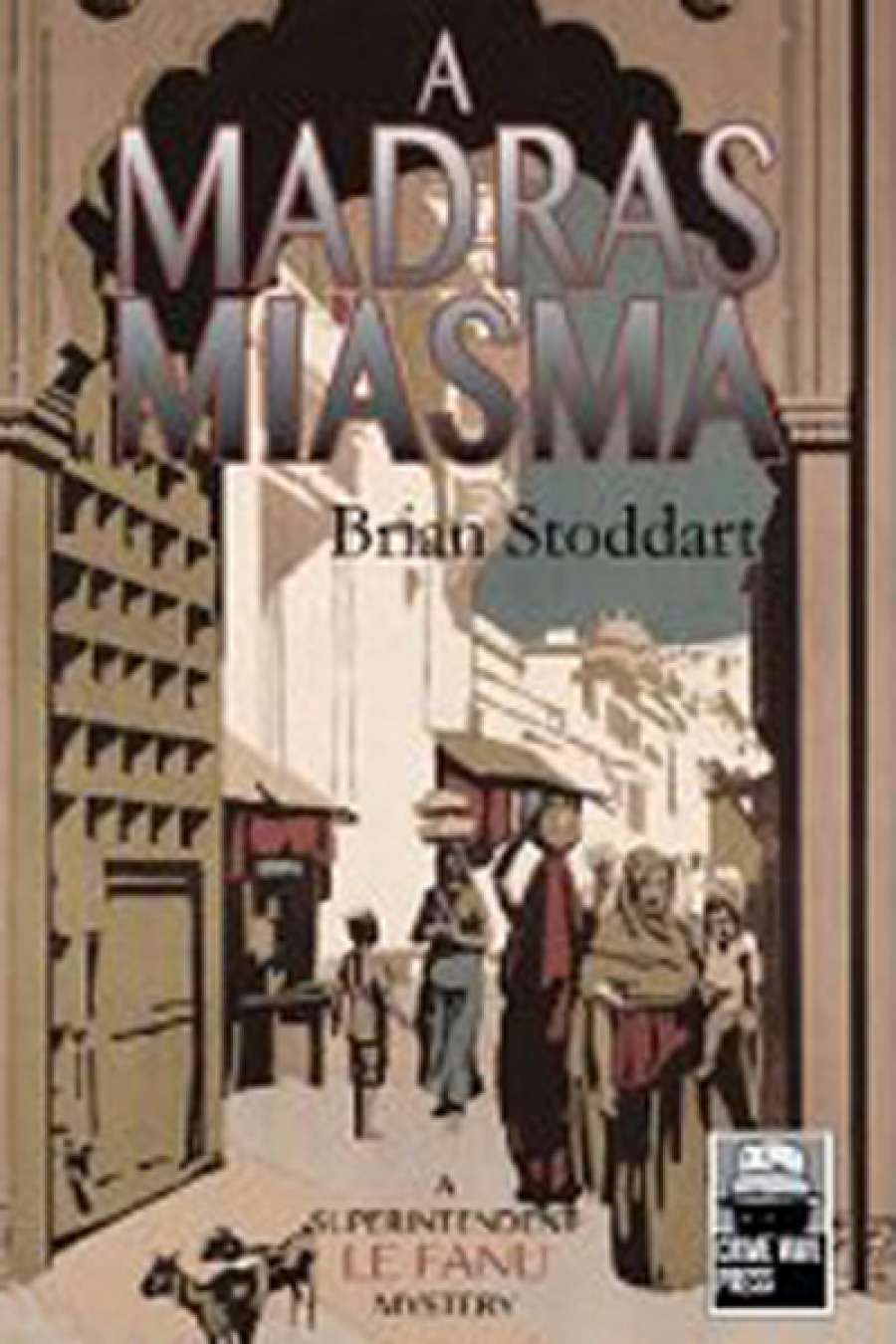
- Free Article: No
- Contents Category: Fiction
- Custom Article Title: Francesca Sasnaitis reviews 'A Madras Miasma' by Brian Stoddart
- Review Article: Yes
- Online Only: No
- Custom Highlight Text:
Brian Stoddart is a scholar and expert in the history of modern India, with sixteen works of non-fiction to his credit. His first novel, A Madras Miasma, is set soon after World War I. The body of an Englishwoman is found with her head buried in the rancid mud of the Buckingham Canal, behind Chepak Palace. Superintendent Christian Jolyon Brenton Le Fanu, head of the recently formed Madras City Crime Unit, and his Muslim sidekick, Sergeant Mohammad Habibullah, must solve the case as quickly as possible. They are hampered by the teeming and uncooperative population of the riverbanks, political unrest, the disquiet of the British ruling class, and, to top things off, the truculent Commissioner of Police Arthur Jepson, who is determined to ‘take [Le Fanu] out’.
- Book 1 Title: A Madras Miasma
- Book 1 Biblio: Crime Wave Press, US$13.95 pb, 261 pp
The body is identified as one Jane Carstairs, ‘a fishing fleeter’, the term used to describe young women from England who arrive in India looking for husbands. Suspects multiply and include the higher echelons of Madras business and government, an elusive American involved in the film industry, and the obligatory femme fatale, Jane’s friend and fellow fleeter Virginia Campbell, whose increasingly provocative outfits have a risible effect on Le Fanu.
Specialised knowledge does not always work to an author’s advantage. The details of life in Madras in the 1920s are interesting in themselves, but Stoddart’s needlessly repetitive descriptions of traversing roads clogged with ‘animals, people and vehicles’ lack vivacity, and his insistence on introducing every character with a description of their physique and costume is plodding. Anachronistic contemporary phrases – describing Madras as ‘a cruel place where “haves” and “have nots” were separated more than in most cities, even in India’, or a belligerent commanding officer as ‘a management problem’ – mar his meticulous scene-setting, as does slapdash proofreading, which allows the substitution of ‘horses’ for ‘houses’ to slip through.


Comments powered by CComment